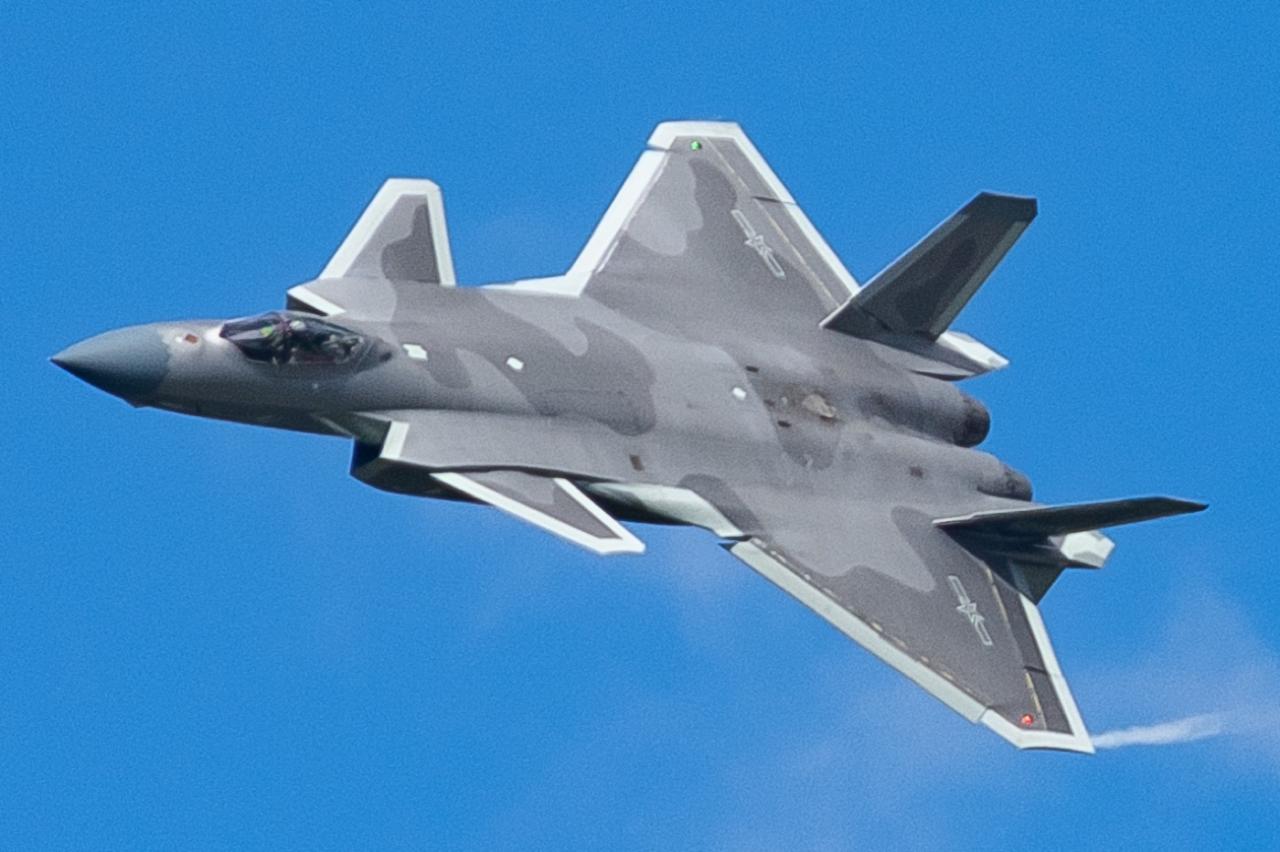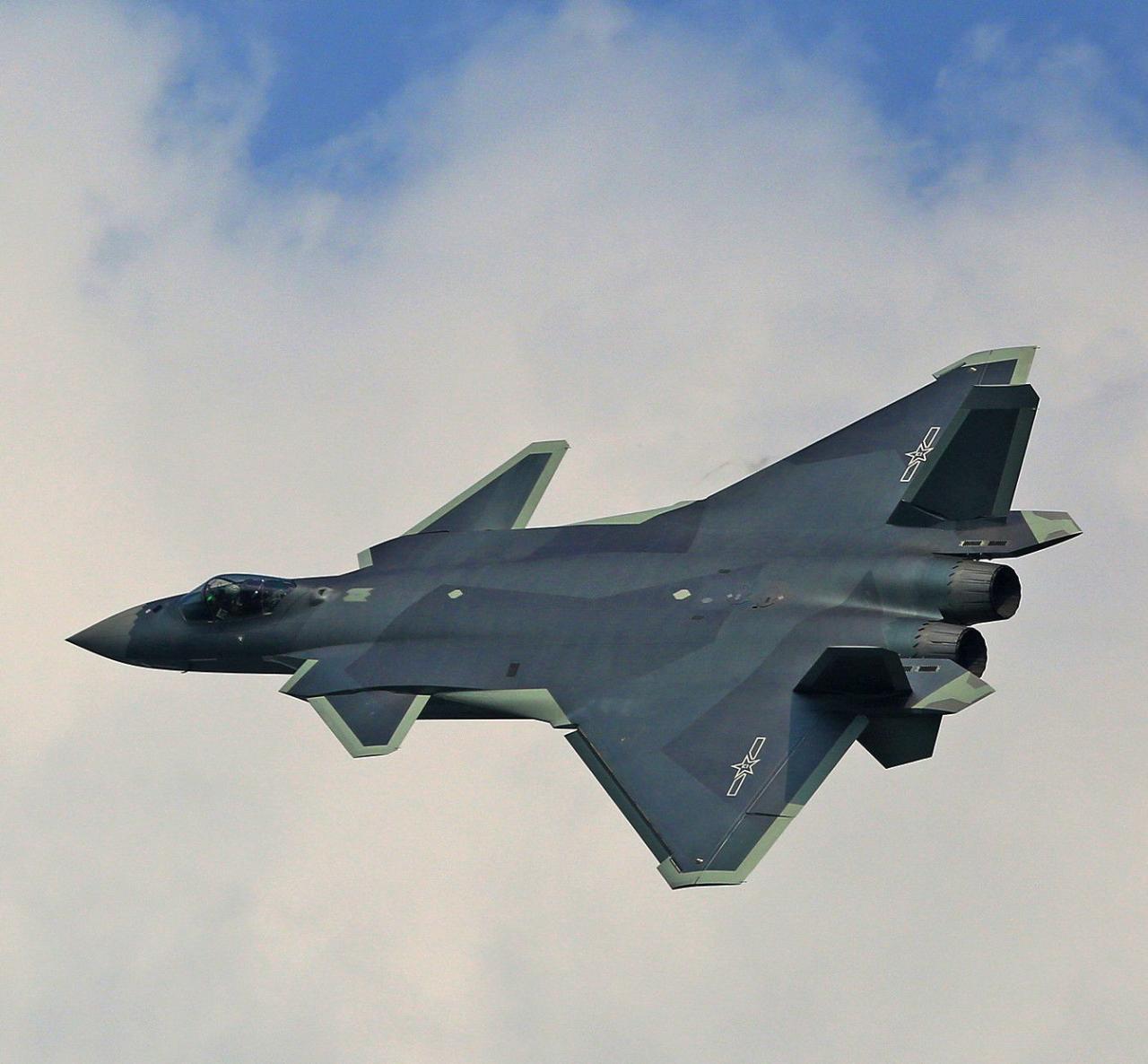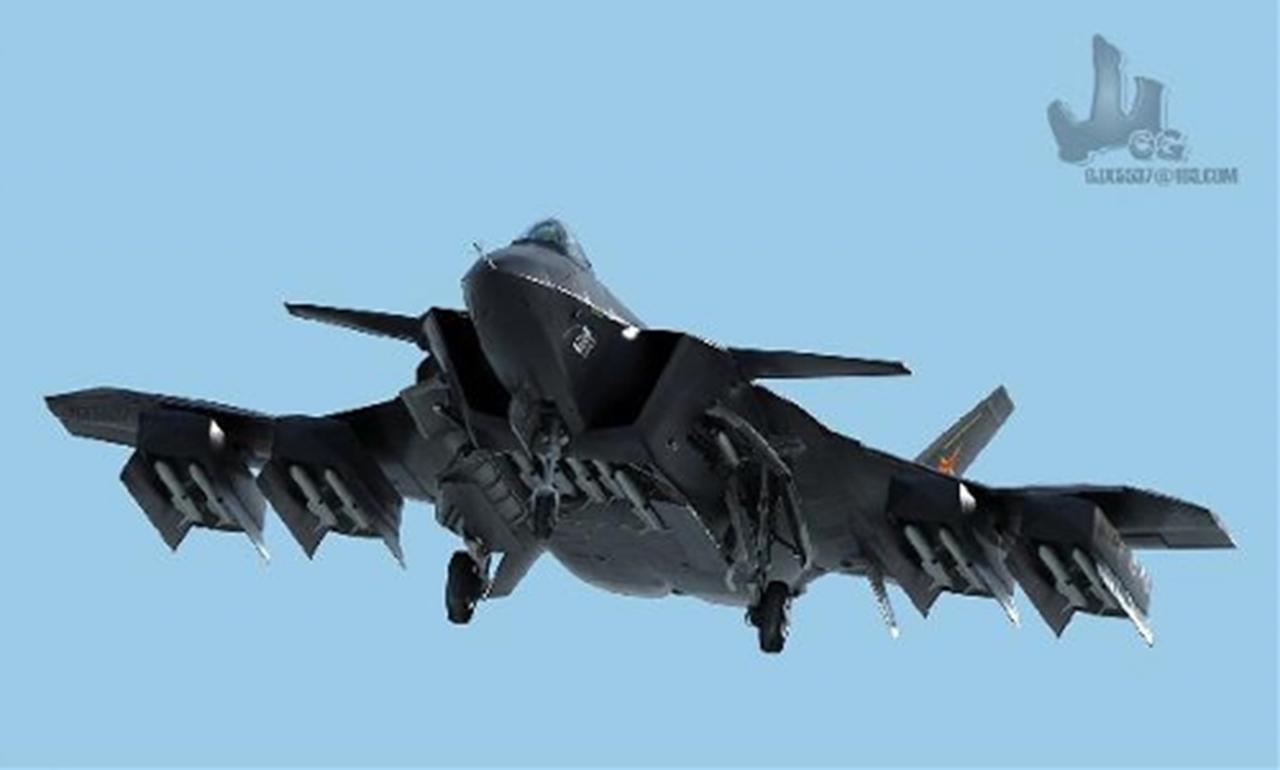As China stealth fighter jets take center stage, this opening passage beckons readers into a world crafted with meticulous precision and deep understanding, ensuring a reading experience that is both absorbing and distinctly original.
China’s stealth fighter jet program has emerged as a formidable force in the global aerospace landscape, captivating the attention of military enthusiasts and geopolitical analysts alike. With a rich history of innovation and a relentless pursuit of technological advancement, China has unveiled a range of stealth fighter jets that are redefining the boundaries of aerial warfare.
Overview of China’s Stealth Fighter Jets
China’s stealth fighter jet program began in the 1990s with the aim of developing advanced aircraft capable of evading radar detection. The program has since produced several models of stealth fighter jets, including the J-11B, J-16, and J-20.
J-11B
The J-11B is a single-seat, twin-engine fighter jet that entered service in 2007. It is a derivative of the Russian Su-27 Flanker and features a number of stealth enhancements, including a reduced radar cross-section and the use of radar-absorbent materials.
J-16
The J-16 is a twin-seat, multirole fighter jet that entered service in 2013. It is based on the J-11B and features a number of improvements, including a more powerful engine, advanced avionics, and a wider range of weapons.
J-20
The J-20 is a single-seat, twin-engine stealth fighter jet that entered service in 2017. It is the most advanced stealth fighter jet in China’s arsenal and features a number of cutting-edge technologies, including a canard-delta wing design, advanced avionics, and a powerful engine.
China’s stealth fighter jets are designed to provide the country with a significant advantage in air combat. They are capable of evading radar detection and engaging enemy aircraft from beyond visual range. This gives them a significant advantage over older, non-stealth aircraft.
However, China’s stealth fighter jets also have some limitations. They are relatively expensive to produce and maintain, and they require a high level of training to operate. Additionally, their stealth capabilities can be compromised by certain radar systems and electronic warfare techniques.
Design and Technology
China’s stealth fighter jets boast unique design features that contribute significantly to their stealth capabilities. They employ advanced materials and technologies, such as radar-absorbent coatings and composite materials, to minimize their radar cross-section and evade detection.
Advanced Materials
- Radar-absorbent materials (RAM):RAM coatings are applied to the aircraft’s surface to absorb and dissipate radar waves, reducing their reflection and making the jet less visible to enemy radar systems.
- Composite materials:Composites, such as carbon fiber and epoxy resins, are used in the construction of the aircraft’s airframe and wings. These materials are lightweight, durable, and have low radar reflectivity, further enhancing the jet’s stealth capabilities.
Innovative Design Features
- Canted vertical stabilizers:The vertical stabilizers on China’s stealth fighter jets are canted outwards, reducing their radar cross-section from certain angles.
- Serpentine air intakes:The air intakes are designed with serpentine ducts that redirect incoming radar waves away from the engine, minimizing radar reflections.
- Internal weapons bays:Weapons are stored internally within the aircraft’s fuselage, reducing their exposure to radar detection and maintaining the jet’s sleek profile.
These advanced design and technology advancements work in conjunction to minimize the radar cross-section of China’s stealth fighter jets, making them difficult to detect and engage in aerial combat.
Engine and Propulsion Systems
China’s stealth fighter jets utilize advanced engine and propulsion systems that play a crucial role in their overall capabilities. These systems provide the necessary power and thrust to enable high-speed flight, maneuverability, and extended range.
The primary engine used in China’s stealth fighter jets is the WS-10 Taihang turbofan engine. This engine features a modular design, digital control systems, and advanced materials, resulting in improved performance and efficiency. The WS-10 provides high thrust-to-weight ratios, allowing the fighter jets to achieve supersonic speeds and rapid acceleration.
Thrust Vectoring Nozzles
In addition to the powerful engine, China’s stealth fighter jets incorporate thrust vectoring nozzles. These nozzles enable controlled deflection of the exhaust gases, providing enhanced maneuverability and agility. By directing the exhaust gases in different directions, the fighter jets can perform tight turns, rapid rolls, and other complex aerial maneuvers with greater precision and control.
Inlet Design, China stealth fighter jets
The inlet design of China’s stealth fighter jets is also crucial for engine performance and overall stealth capabilities. The inlets are shaped and positioned to minimize radar cross-section (RCS) while ensuring efficient airflow to the engine. Advanced materials and coatings are used to reduce radar reflections and maintain the aircraft’s stealth characteristics.
Propulsion Integration
The engine and propulsion systems are seamlessly integrated into the overall design of China’s stealth fighter jets. The placement and orientation of the engines, inlets, and exhaust nozzles are carefully optimized to achieve optimal aerodynamic performance and minimize RCS. This integration ensures that the fighter jets can maintain high levels of stealth while maximizing their flight capabilities.
Avionics and Sensor Systems
China’s stealth fighter jets are equipped with advanced avionics and sensor systems that provide pilots with enhanced situational awareness, target acquisition, and navigation capabilities. These systems are crucial for the effectiveness of the fighter jets in combat scenarios, allowing them to detect and engage enemy aircraft, ground targets, and other threats.The avionics systems in China’s stealth fighter jets include a variety of sensors, such as radar, electro-optical/infrared (EO/IR) sensors, and electronic warfare (EW) systems.
These sensors provide the pilot with a comprehensive picture of the battlespace, allowing them to identify and track enemy aircraft, ground targets, and other threats. The avionics systems also include a variety of displays and controls that allow the pilot to interact with the aircraft and its systems.
Radar Systems
The radar systems in China’s stealth fighter jets are designed to detect and track enemy aircraft and ground targets. These systems use a variety of frequencies and waveforms to optimize their performance in different operating environments. The radar systems are also integrated with the aircraft’s other sensors, such as the EO/IR sensors, to provide the pilot with a more complete picture of the battlespace.
Electro-Optical/Infrared (EO/IR) Sensors
The EO/IR sensors in China’s stealth fighter jets are designed to detect and track enemy aircraft and ground targets using visible light and infrared radiation. These sensors provide the pilot with a high-resolution image of the battlespace, allowing them to identify and track targets even in low-visibility conditions.
The EO/IR sensors are also integrated with the aircraft’s other sensors, such as the radar systems, to provide the pilot with a more complete picture of the battlespace.
Electronic Warfare (EW) Systems
The EW systems in China’s stealth fighter jets are designed to detect and counter enemy radar and other electronic threats. These systems use a variety of techniques to disrupt enemy radar and communications systems, making it more difficult for the enemy to track and engage the aircraft.
The EW systems are also integrated with the aircraft’s other sensors, such as the radar systems, to provide the pilot with a more complete picture of the battlespace.
Armament and Weapons Systems: China Stealth Fighter Jets
China’s stealth fighter jets are equipped with a comprehensive suite of advanced armament and weapons systems, enabling them to engage in a wide range of combat missions. These weapons systems include air-to-air missiles, air-to-ground missiles, and precision-guided bombs, each designed to fulfill specific roles in air combat and ground attack operations.
Air-to-Air Missiles
The stealth fighter jets are armed with an array of air-to-air missiles, including short-range, medium-range, and long-range variants. These missiles employ advanced radar and infrared seeker technologies to engage enemy aircraft at varying distances. The short-range missiles are primarily used for close-in dogfights, while the medium-range and long-range missiles allow for beyond-visual-range combat, enabling the fighter jets to neutralize threats without entering the enemy’s detection range.
Air-to-Ground Missiles
The fighter jets are also equipped with air-to-ground missiles designed to strike targets on the ground, including armored vehicles, bunkers, and other hardened structures. These missiles utilize laser or GPS guidance systems to achieve precise targeting, ensuring maximum accuracy and effectiveness in destroying enemy assets.
Precision-Guided Bombs
In addition to missiles, the stealth fighter jets carry a range of precision-guided bombs, which combine advanced guidance systems with high-explosive warheads to deliver devastating effects on ground targets. These bombs employ laser, GPS, or inertial navigation systems to guide them to their intended targets with pinpoint accuracy, minimizing collateral damage and increasing the likelihood of mission success.
Operational Use and Deployment
China’s stealth fighter jets have been deployed in a variety of operational exercises and military operations, demonstrating their capabilities and strategic significance.
These deployments have provided valuable experience in operating stealth aircraft in different scenarios and have allowed China to refine its tactics and strategies for employing these advanced fighters.
Exercises and Training
- China regularly conducts large-scale military exercises involving its stealth fighter jets, such as the “Blue Sword” exercises, which simulate combat operations in various environments.
- These exercises provide opportunities for pilots to train in complex scenarios, test new tactics, and improve their coordination with other units.
Operational Deployments
- China has deployed its stealth fighter jets to disputed areas in the East China Sea and South China Sea, signaling its determination to assert its territorial claims.
- These deployments have raised tensions with neighboring countries and demonstrated China’s willingness to use its military power to protect its interests.
Strategic Implications
- The deployment of China’s stealth fighter jets has significant strategic implications for regional and global security dynamics.
- These aircraft provide China with a significant advantage in air combat, allowing it to project power and deter potential adversaries.
- The deployment of stealth fighters also raises concerns about the potential for escalation in regional conflicts and the risk of miscalculation.
Ending Remarks
In the realm of aerial combat, China stealth fighter jets stand as a testament to the nation’s growing military prowess and its unwavering commitment to safeguarding its airspace. As the future of warfare evolves, these stealthy predators will undoubtedly play a pivotal role in shaping the geopolitical landscape and ensuring China’s continued dominance in the skies.
Popular Questions
What is the most advanced Chinese stealth fighter jet?
The Chengdu J-20 is currently the most advanced Chinese stealth fighter jet in service.
How many stealth fighter jets does China have?
The exact number of stealth fighter jets in China’s arsenal is classified, but estimates range from several dozen to over a hundred.
What are the capabilities of China’s stealth fighter jets?
China’s stealth fighter jets possess advanced capabilities, including low radar cross-section, high maneuverability, and a wide range of weapons systems.
What is the future of China’s stealth fighter jet program?
China is expected to continue developing and fielding new stealth fighter jet models in the coming years, further bolstering its airpower and enhancing its strategic capabilities.




